Discover the latest news, explore exhibits and connect with the natural world. Visit Catalyst Online
Members receive free admission to the Museum 364 days a year! Become a Member
Take your Museum journey home with you. Visit the Museum Shop
World’s Biggest, Boldest and Most Beautiful Butterflies Now in "Animals of the Rainforest" Temporary Exhibition!
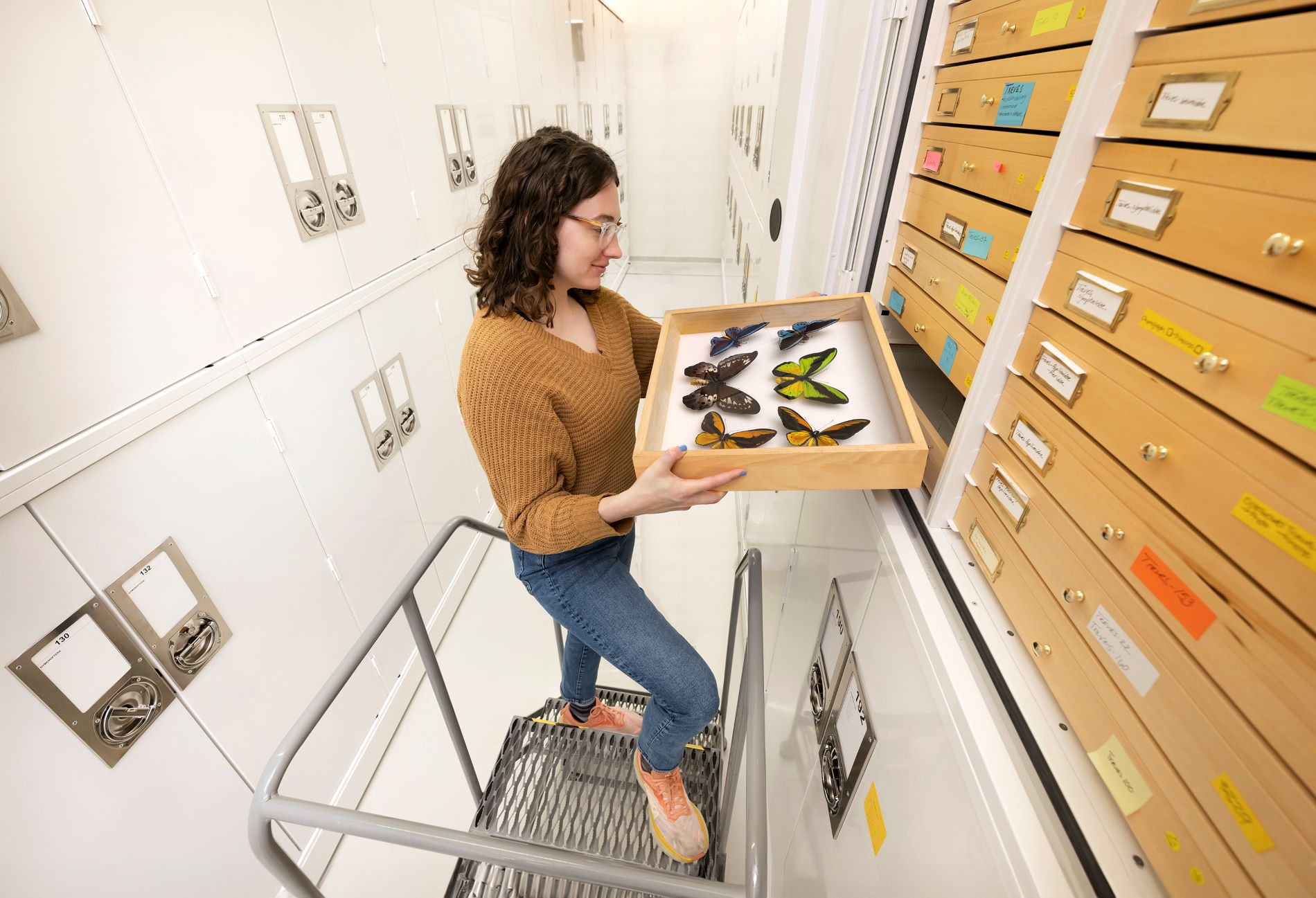
To the casual observer, the idea of collecting butterflies may sound like a leisurely pastime, but to seasoned collector Dr. Jean François Treves, that is not exactly the case. A mathematics professor who spent 40 years assembling a stunning butterfly collection from around the world, Dr. Treves had one of his most memorable adventures in the Venezuelan jungle when he ran into a jaguar at dusk.
“All of the sudden, there was a roar… And I did the most stupid thing I could do in those circumstances. I left the path and started running away from the roar in a completely dark forest,” Treves said. Thankfully, he managed to elude the jaguar and make it back to safety.
Where You Can See Butterflies from the Treves Collection: Animals of the Rainforest
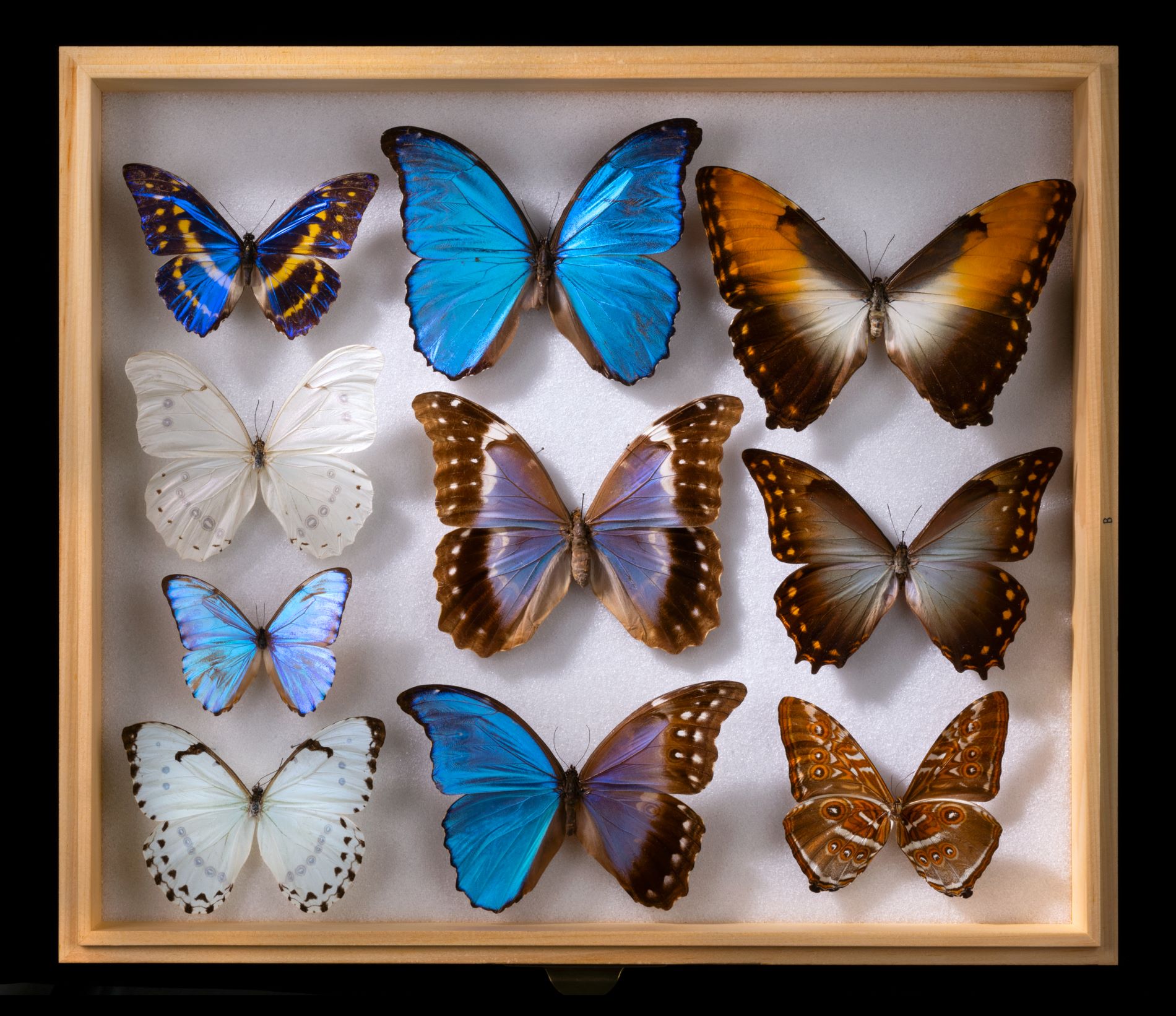
Drawer highlighting the beauty and diversity of butterflies from the genus Morpho contained within the Treves collection. (Photo/ Rick Wicker)
Traveling to remote destinations such as Papua New Guinea, Malaysia and Venezuela, Dr. Treves collected and purchased some of the world’s biggest, boldest and most beautiful butterflies, which he later donated to the Museum in 2022.
“If you want to find the top 2 percent of the prettiest and most exquisite butterflies, this is it,” said Dr. Frank Krell, senior curator of Entomology at the Museum. “It’s the crème de la crème of butterflies.”
But the collection is significant to the Museum more for its potential to aid in new scientific discoveries.
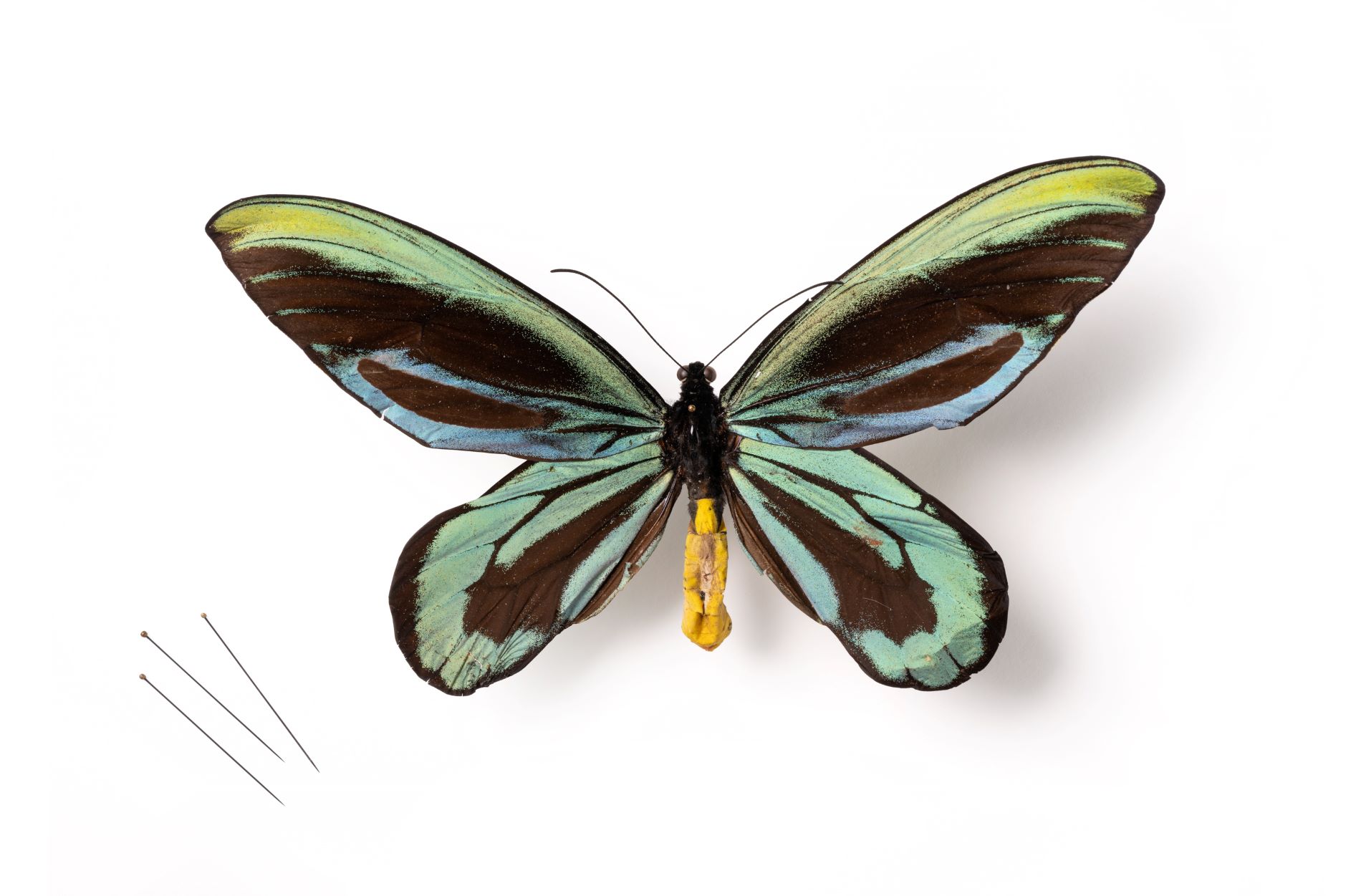
A male specimen of the Queen Alexandra’s Birdwing butterfly (Ornithoptera alexandrae), the largest butterfly species in the world. (Photo/ Rick Wicker)
“There might be new species within the collection that are just waiting to be investigated and described by a taxonomist,” said Genevieve Anderegg, assistant collections manager of Invertebrate Zoology.
These important specimens can also provide insights into how we can conserve existing populations of butterflies. Because the date and precise location were recorded when the insects were collected, scientists can deduce the ideal conditions for specific species as well as how environmental factors such as climate change have influenced population distribution over time. This knowledge can be used to pinpoint areas that are currently at risk so protective measures can be taken.
“The world is constantly changing. These specimens are literally time machines. You can never go back to March 1966 in Obidos, Brazil, and get another one,” said Anderegg, referring to a Morpho hecuba, also known as the sunset Morpho.
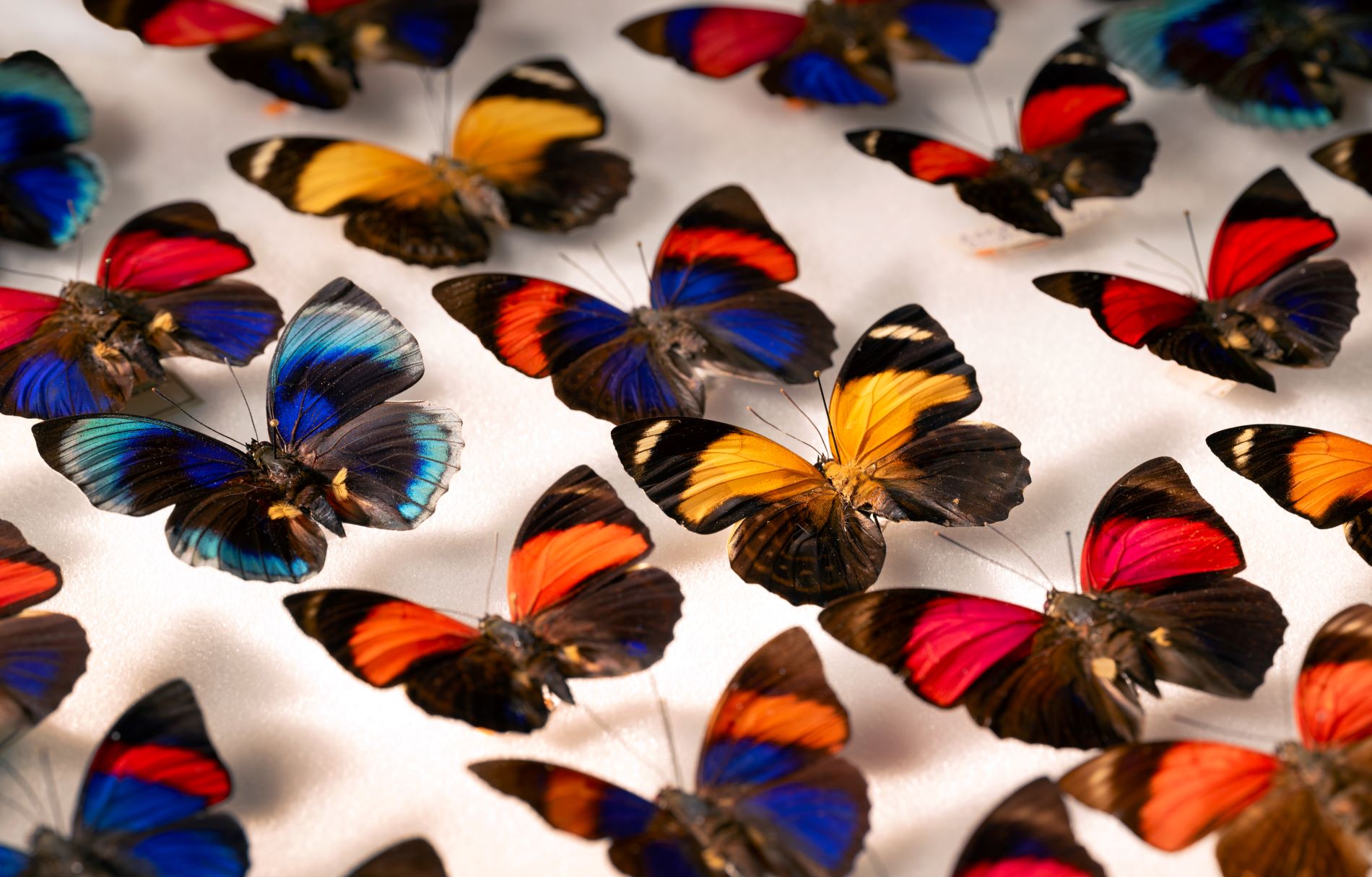
A drawer of butterfly specimens from the genus Agrias from the Treves collection. (Photo/ Rick Wicker)
The Treves Collection contains some of the world’s rarest and most prized butterflies, including a male and female pair of Ornithoptera alexandrae (Queen Alexandra’s birdwing), which is the world’s largest butterfly, measuring 11 inches across. Because numerous national and international laws exist to deter the illegal trafficking of wildlife, the Museum painstakingly analyzed every specimen and all associated documentation – much of which had to be translated from French to English prior to review – to ensure they were collected legally.
Other specimens in the collection, many of which possess a rare beauty and grandeur as remarkable as their names suggest, include Morpho hercules, Ornithoptera paradisea chrysanthemum, Archaeoprepona demophon, Troides oblongomaculatus papuensis, Eurytides philolaus xanticles and more.
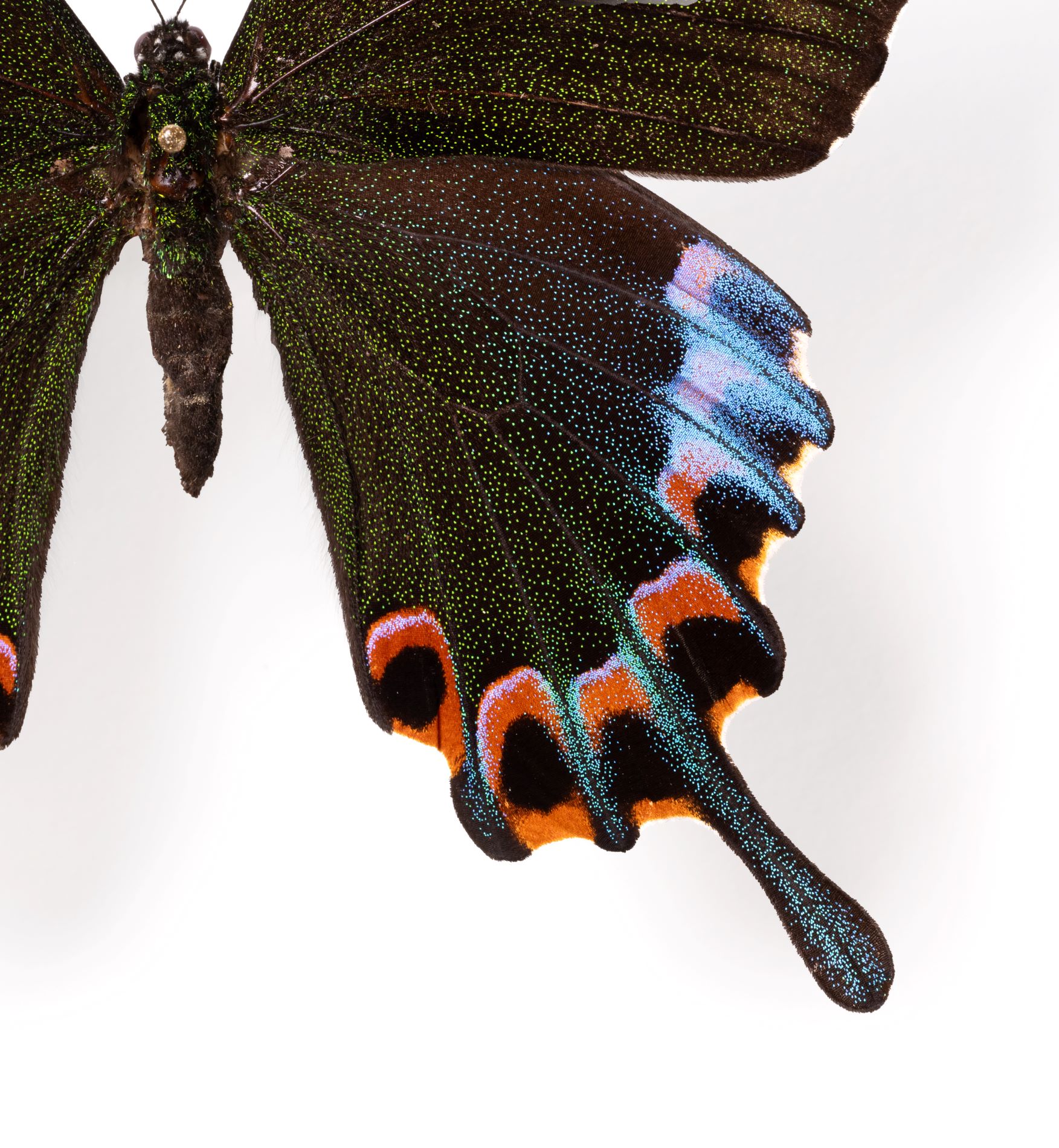
Close-up of Papilio chikae demonstrating remarkable color patterns. (Photo/ Rick Wicker)
According to Anderegg, it is through an unusual quirk that these – and most butterflies – obtain their color. Rather than using pigmentation, which describes the absorption or reflection of certain wavelengths of light and is typically associated with the color of skin, hair and eyes in most animals, butterflies employ structural properties such as microscopic ridges on the scales of their wings to display their brilliance. This phenomenon is known as iridescence.
Although this collection is currently available only to scientists, a years-long effort to catalog, photograph, and upload the collection to an online database accessible to everyone is underway. Scientists can also request loans, potentially leading to insights about the genetic change occurring in a species over time, the diet of the insect, the toxins present in its environment, the pests it was fighting at the time of its death and more. All these factors can be analyzed and compared to develop a more complete picture of the organism and its environment.
“We don't know what opportunities the future will bring us. These wonderful specimens will be available for new discoveries for generations to come,” Dr. Krell said.
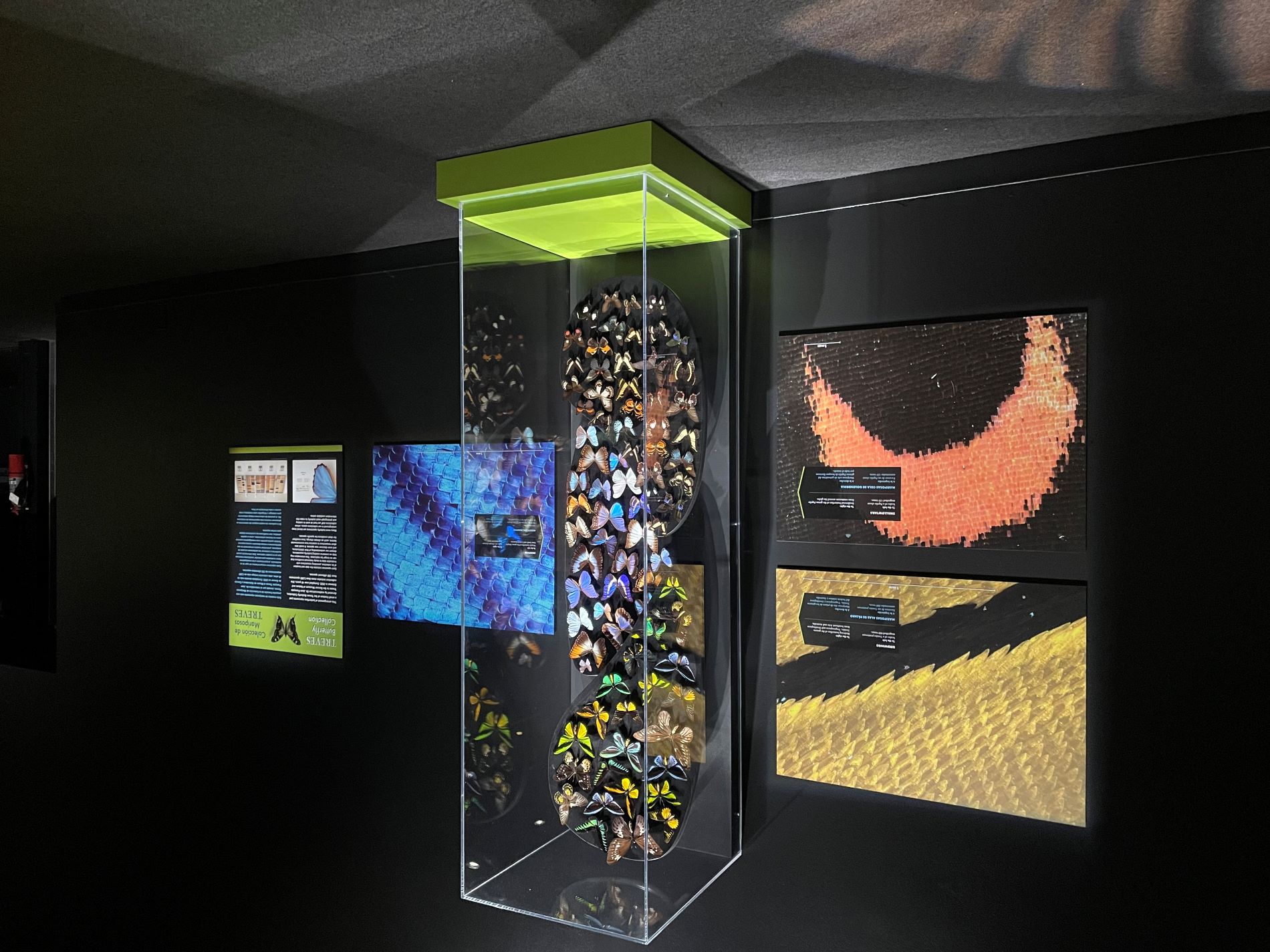
An beautiful arrangement of butterflies from the Treves Collection can now be seen in temporary exhibition, "Animals of the Rainforest," at the Denver Museum of Nature & Science. (Photo/ Taran Volckhausen)
For a limited time, you can see an arrangement of these beautiful butterflies from the Treves Collection in the temporary exhibition, "Animals of the Rainforest" — now open at the Denver Museum of Nature & Science.
In addition to butterflies, "Animals of the Rainforest" invites you to meet fascinating live animals who call the rainforest home and explore the wonders of ecology and conservation through expert animal care demonstrations and stunning displays. Don’t miss Denver’s unique chance to experience the rainforest’s unmatched biodiversity and have a blast while doing it!
Learn more: Animals of the Rainforest
This browser is no longer supported.
We have detected you are using a less secure browser - Internet Explorer.
Please download or use Google Chrome, Firefox or if using Windows 10, you may also use Microsoft's Edge browser.